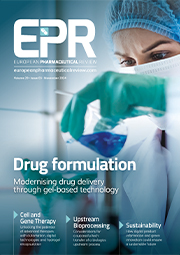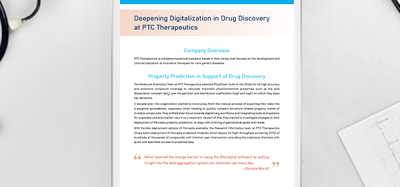Non-clinical dose formulation considerations
Posted: 15 December 2017 | David Keller | No comments yet
Designing appropriate non-clinical safety studies requires thoughtful, and sometimes experimental, consideration of the delivery methodology for the therapeutic. The choice of formulation affects drug release and absorption and has a direct impact on the pharmacokinetic profile and associated response of the model system. The formulation should be compatible with the study design, species, and test article.


During the discovery phase, the formulation needs to only sufficiently deliver the therapeutic to support proof-of-concept and lead target identification studies. The robustness of these formulations with respect to accuracy, homogeneity, repeatability and stability, is not typically considered until regulated safety data is being generated. For regulated preclinical work, formulations need to perform reliably and consistently while maximising exposure in the animal model to the therapeutic. To demonstrate that the formulations are robust, accurate analytical methods need to be developed and validated in accordance with regulatory expectations. Reference is usually made to the AAPS whitepaper1 for guidance on the typical analytical activities required to support GLP toxicology studies.
In generating investigational new drug (IND)-enabling data, three different formulations are commonly required for small molecules: one for the general toxicology safety evaluation studies; one used in the in vitro genetic toxicology assays (GeneTox); and one for use in the human ether-a-go-go (hERG) assay. The GeneTox formulation typically consists of a neat solvent, most commonly DMSO or water, and needs to span a wide range of concentrations (typically 0.001 to 100mg/mL). The hERG assay requires the formulation buffer to sustain the integrity and biological activity of the hERG patch clamp and is typically limited to physiological salt solutions that may contain low levels of organic solvent. The GeneTox and hERG formulations often require time to establish solubility limits and compatibility effects to ensure proper exposure. Such formulations fit a specific need and options are limited in the vehicle composition.
The analytical methodology for each formulation requires validation, and the stability of each formulation needs to be established. As a minimum, stability data must cover the duration between formulation preparation and time of dosing. Additional stability data is desirable to allow larger batch preparations, which leads to reduced waste, cost and technical resources; this also allows preparations to be scheduled and analysed well in advance of dosing.
To assist in screening vehicles for animal studies, pre-formulation studies focus on the physicochemical properties of the drug substance and existing data on drug solubility, hydrophobicity, salt form, crystal form, and physical stability. The sponsor or a contract manufacturing site typically does this work and the results are used to identify the optimal salt and polymorphic form to ensure that the test article will perform as intended between batches and upon storage. These findings help support the development of the clinical formulation, but the information is imminently beneficial to the non-clinical formulation, if available.
Simplifying formulation activities
Good pre-formulation data can help simplify formulation activities by identifying the optimal solvent, pH, or additive, and by providing the physical form of a drug substance that will more consistently formulate at the high concentrations needed to support the IND-enabling drug safety studies. If the salt form planned for the clinic has not been defined and the high dose in non– clinical studies is a suspension, there is the risk that a change in salt form could dramatically impact the bioavailability and ultimately the safety margin established in the preclinical drug safety studies.
Guidances2,3 provide a couple of options to meet safety margins that would permit continued development in the clinic. Common approaches for small molecules are a 50-fold margin of exposure or a limit dose of 1,000mg/kg/day. Alternatively, an appropriate 10-fold exposure multiple for biologics is targeted. Many sponsors intend to use the same vehicle used in discovery for the IND-enabling work, only to find that the high dose is either insoluble, or too viscous to dose upon scale-up. Alternatively, the lowest dose may result in less exposure to the therapeutic than expected due to handling, materials or equipment losses, and the problem is discovered only upon implementing analytical methods to support the GLP safety assessments.
To avoid these situations and ensure efficient execution of regulated preclinical studies, one should plan to perform an analytical evaluation of test batches at sufficient scale to get an accurate read on the ‘dosability’ of the formulation, while also ensuring that preparations are accurate. If drug substance supply is limited, an intermediate scale preparation of 5-10mL is often sufficient, although smaller volumes may not always provide a good read on the physical properties of the formulation on scale-up, or allow for reliable sampling and accurate testing.
In the non-clinical space where the purpose is to achieve high exposure, oral vehicles can differ from those planned for the clinic. Consider that most orally administered therapeutics are dosed as capsules or tablets whereas most non-clinical studies use hundreds of animals that would require thousands of capsules to be filled or tablets to be prepared. Clearly, a solution dose is the most expeditious approach for non-clinical studies. For parenteral and topical formulations, the non-clinical studies should use the intended clinical formulation; however, selection of the proper form of the drug substance as aforementioned is even more crucial to achieving concentrations that provide a sufficient safety margin over the clinical dose.
Formulating biologics
Biologics are formulated as stock solutions or as lyophilised powders, subsequently diluted to the desired concentration and administered parenterally. For protein therapeutics, there are significant challenges in developing them as stock solutions, as the shelf life may need to be longer than two years to cover the duration of the studies. The design of the formulation matrix is a primary focus and the sponsor or delegated contract manufacturing laboratory extensively tests to confirm characterisation and stability when developing the stocks. Regardless, if the biologic is a stock solution or in powder form, the dosing concentration and stability needs to be tested as per the GLP requirements.
Concentration analyses may be assessed by simple 280nm absorbance (A280) measurements for proteins or A260 for nucleic acid therapies; however, these tests alone are not generally acceptable to regulatory agencies to support the stability of the diluted mixtures. The properties of the molecule often dictate the appropriate platform used to confirm stability. Sponsor and formulators should have accumulated information on the most likely degradation pathway for their particular therapeutic agent in the development of the stock matrix, and can then assess the ability of the method to monitor stability. For example, when the aggregate formation is a primary concern, size exclusion chromatography can be used to support the stability of large molecules as it can detect and monitor aggregates and fragments that form upon storage. Alternatively, if instability results in the loss of an amino or nucleic acid unit, a conventional HPLC analysis monitoring the resulting degradation products may be more appropriate.
In developing the non-clinical formulation, it is critical that excipients are well tolerated and safe, regardless of the route of administration. Historical data is used to aid non-clinical vehicle selection, as the compatibility with the species are known, and effects would be known if they were to interfere with a given indication. Research into the safety and compatibility of solvents, excipients, and additives in multiple species, routes of administration and dosing duration is continually ongoing.
The review by Gad et al4 provides a variety of options to consider in selecting the vehicle components that can meet the needs of the programme. As mentioned therein, the test system, route of administration, target indication and species often direct the formulation of the test article and dictate boundary conditions around excipients, pH, dose volume, and concentrations. The limits and permissible ranges of each parameter can vary between species and route of administration, most specifically with parenteral dosage forms. Values outside the typical ranges are permissible in certain situations and governed by the testing facilities’ institutional animal care and use committee (IACUC).
An initial screen
As different excipients and vehicle combinations are evaluated, visual assessment of the physical properties is a good initial screen. From there, the upper limit of concentration, osmolality, pH, density and homogeneity can be assessed for compatibility with the planned test system. When multiple vehicles seem equally viable based on physicochemical assessments or when comparing routes of administration, additional discovery PK studies can generate data on the formulation or delivery system that provides the desired exposure. Results from such studies can benefit both clinical and non-clinical general toxicology formulation selections.
Prior to preparing formulations for a regulated study, test article characterisation is generally required. The GLP requirements state that the identity, strength, purity, composition and other characteristics that define the test or control article must be determined and documented for each batch. The sponsor, or a delegated laboratory or contract manufacturer, is typically responsible for the test article characterisation. Furthermore, stability of the bulk material also needs to be determined either prior to study initiation or concomitantly with the study, provided periodic analysis of each batch is planned and performed.
The sponsor typically performs the stability assessment or delegates this work to a contract analytical laboratory; however, if the testing facility has sufficient analytical capabilities, it is possible to perform bulk stability assessment as part of the safety study. A certificate of analysis, statement of testing, or other appropriate documentation to support the integrity and stability of the test article should be provided to the CRO performing the nonclinical study. Clear documentation or communication on sample storage conditions and the number of known and supported freeze/thaw cycles as applicable either prior to or along with the shipment are also required.
References
- Whitmire ML, Bryan P, Henry TR, Holbrook J, Lehmann P, Mollitor T, Ohorodnik S, Reed D, Wietgrefe HD. NonClinical Dose Formulation Analysis Method Validation and Sample Analysis. The AAPS Journal. 2010;DOI: 10.1208/ s122248-010-9226-9
- International Conference on Harmonisation, Non-Clinical Safety Studies for the Conduct of Human Clinical Trials and Marketing Authorization for Pharmaceuticals M3(R2). www. fda.gov/downloads/drugs/ guidances/ucm073246.pdf
- International Conference on Harmonisation, Preclinical Safety Evaluation of Biotechnology-Derived Pharmaceuticals S6(R1). www. fda.gov/downloads/Drugs/…/ Guidances/UCM194490.pdf
- Gad SC, Spainhour CB, Shoemake C, Stackhouse Pallman DR, Stricker-Krongrad A, Downing PA, Seals RE, Eagle LA, Polhamus K, Daly J. Tolerable Levels of Nonclinical Vehicles and Formulations Used in Studies by Multiple Routes in Multiple Species With Notes on Methods to Improve Utility. Int J Toxicol. 2016;35(2):95-178. DOI: 10.1177/1091581815622442
Biography


The rest of this article is restricted - login or subscribe free to access


Why subscribe? Join our growing community of thousands of industry professionals and gain access to:
- bi-monthly issues in print and/or digital format
- case studies, whitepapers, webinars and industry-leading content
- breaking news and features
- our extensive online archive of thousands of articles and years of past issues
- ...And it's all free!
Click here to Subscribe today Login here








